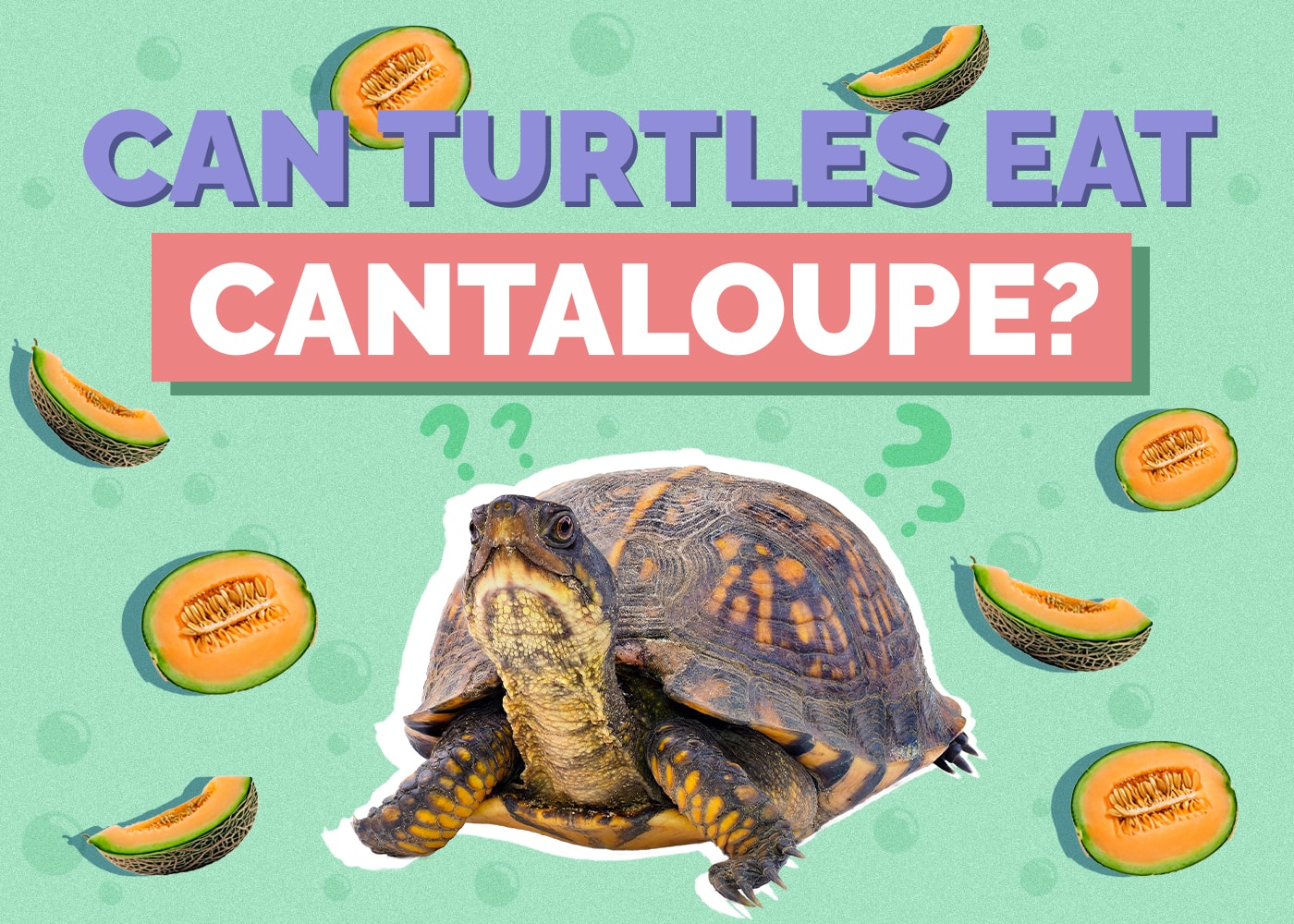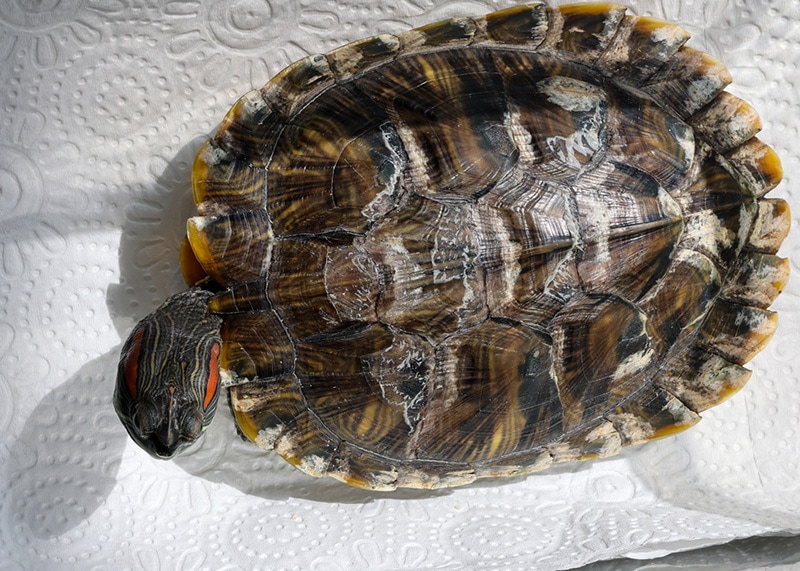Are Tortoises Good Pets? Facts & FAQ
Updated on
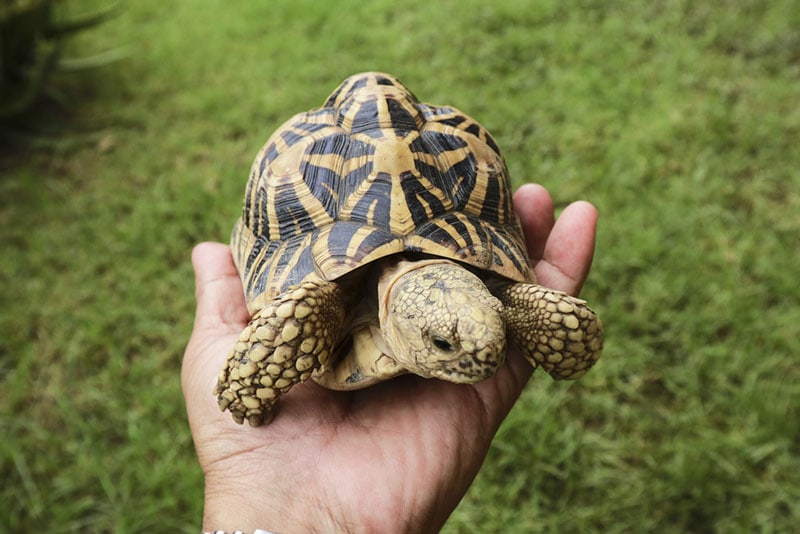
Click to Skip Ahead
Do you often see a tortoise and have an urge to keep one as a pet? If so, it’s not your fault! These adorable little animals appear docile and shy but make amazing companions, provided you look after their needs.
Unlike cats or dogs, a tortoise doesn’t shed. They are also not too fussy about their food or create a nuisance for the rest of the pets. Still, not all tortoise breeds make great pets, so make sure you consider some important things.
Read this guide to know everything before you bring a tortoise home.
Why Should You Keep a Tortoise as Your Pet?
Have you ever seen a tortoise? They are one of the most adorable creatures with a gentle demeanor. But most importantly, their unique features make them stand out.
A tortoise has a wrinkled face with a round, dome-like shape. Their short legs make them look the cutest, especially with their slow walk. They have a calm personality, making them ideal around people and other animals. The best part? Tortoises are the best low-maintenance companions.
However, there is more to this creature than most pet owners would tell you. So, you should know a few things before bringing a tortoise home.

The 5 Things to Consider Before Adopting a Tortoise
To ensure a great experience with a tortoise, consider the following when bringing the animal home as a pet.
1. Tortoises & Turtles Are Different
Don’t confuse a turtle and a tortoise. They are different with varying characteristics. For instance, a tortoise dwells well on land, while a turtle prefers water. There is also a huge difference in the longevity of both. A tortoise can live more than 100 years, while a turtle only has a lifespan of between 20 and 40 years. What’s more, a turtle is an omnivore, but most tortoise species are herbivores. Ensure you know all these facts to buy the right reptile for your home.
2. Pick the Right Species
If you think that all tortoises are similar, you are wrong. There are different species of tortoise, and each has their own requirements. Some tortoises are easy to pet, but others may require extra effort. We will talk more about the best tortoise species later in this article.

3. Get Enough Space for Your New Pet
A tortoise needs their own good space. So, ensure you have enough area at home to accommodate the cute reptile. Even if you buy a small tortoise, a 2-foot by 5-foot space is enough. The height of the enclosure doesn’t matter in some cases because most tortoises don’t climb, except for a Pancake tortoise. If you get a medium or large tortoise, design an appropriate space accordingly.
4. Be Prepared for Your Pet’s Diet
Before you make a tortoise your pet, ensure you have enough money to accommodate their diet. To ensure your pet lives longer, feed the tortoise good amounts of fibrous vegetables, proteins, and a few fruits. You can get lots of proteins from crickets, mealworms, and earthworms.
Don’t go overboard with proteins. Unfortunately, excess proteins can lead to malnutrition, slow shell growth, and, worse, to your tortoise’s demise. Your tortoise also needs certain calcium supplements in their diet.
A tortoise makes a loyal pet, but you should be able to feed them well so they stay happy. It is imperative to consult a specialist and curate a healthy diet program for the tortoise.

5. Provide UVB Lighting
A tortoise can’t survive without UVB lighting and heat. You must be ready to provide them with both. This reptile demands UVB lighting to synthesize vitamin D3. This is an important process in a tortoise’s life. Without it, your pet may fail to metabolize the calcium consumed and develop metabolic bone disease. A tortoise’s low calcium levels can lead to lethargy, tremors, depression, and death.
7 Types of Tortoises That Make Great Pets
Some amazing tortoise breeds make better pets than the rest. Dig in for a summary of each.
1. Russian Tortoise
Most people in the USA have Russian tortoises as pets. They are inexpensive and small with minimum needs. However, before you keep one, know that this cold-blooded animal requires safe, 8-foot-deep housing. This is because this tortoise is a borrower and can find its way out of the enclosure. The digging usually happens to escape the heat during hibernation. Other requirements of this tortoise include a basking spot, UVB lighting, and a water dish.
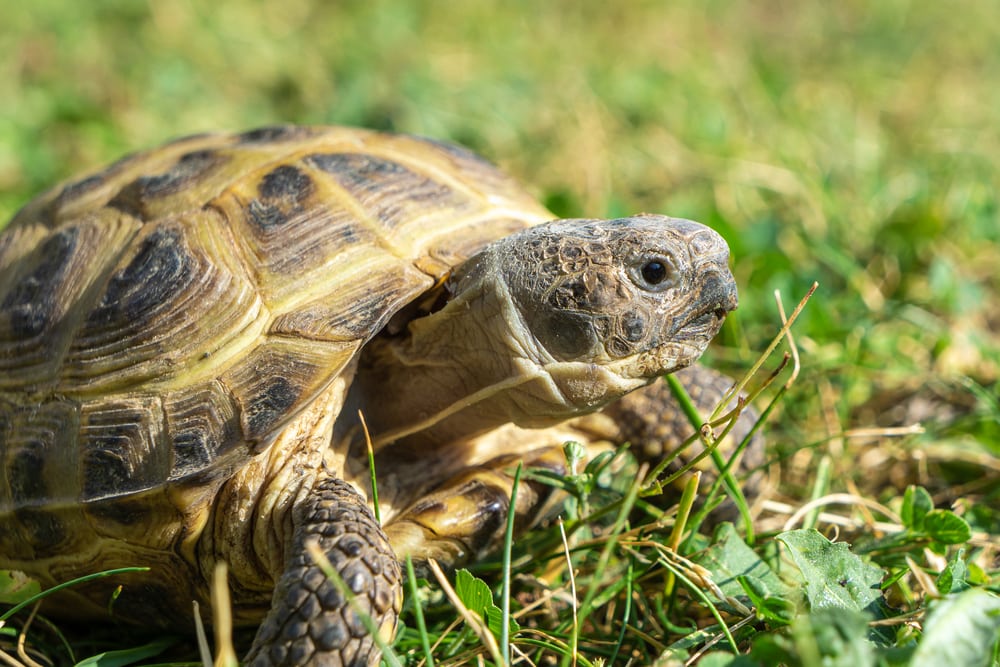
2. Pancake Tortoise
The Pancake tortoise resembles a turtle due to their flat shell. What’s more, they are fast runners. The fast tortoise uses their speed and flexibility to prevent danger rather than hiding in their own shell.
If you want a Pancake tortoise as a pet, be aware as this reptile is a great climber. Build a heightened aquarium and cover the top with a screen. You must also manage humidity and room temperature to keep your pet healthy and comfortable.

3. Red-Footed Tortoise
Your next option is a Red-footed tortoise. This one features red feet and legs and comes with an inquisitive nature. If you haven’t kept a tortoise before, this reptile can be a perfect companion to start your journey.
A Red-footed tortoise needs a 50-square-foot enclosure with good UVB light. Make sure you can maintain 70% to 80% humidity. To keep the tortoise full, leafy greens would make a perfect diet. But a change is always good, so you will also have to stock some mice, rats, chicks, and insects. You will find this tortoise quite friendly, making them a perfect friend on your dark days.
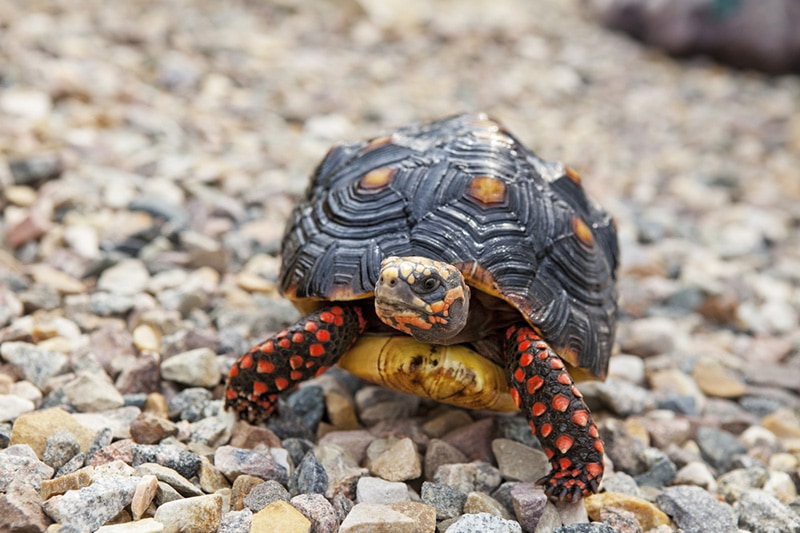
4. Indian Star Tortoise
Do you have a big budget and want an expensive yet fancy pet? In that case, an Indian Star Tortoise will blow your mind. This good-looking tortoise has a star-like pattern on their shell. This is why this tortoise is quite in demand.
This tortoise is quite friendly and can live with other tortoises. The enclosure requirements are also limited. You can’t export these reptiles from their native homes legally. So, if you want one, only contact trusted captive breeders.
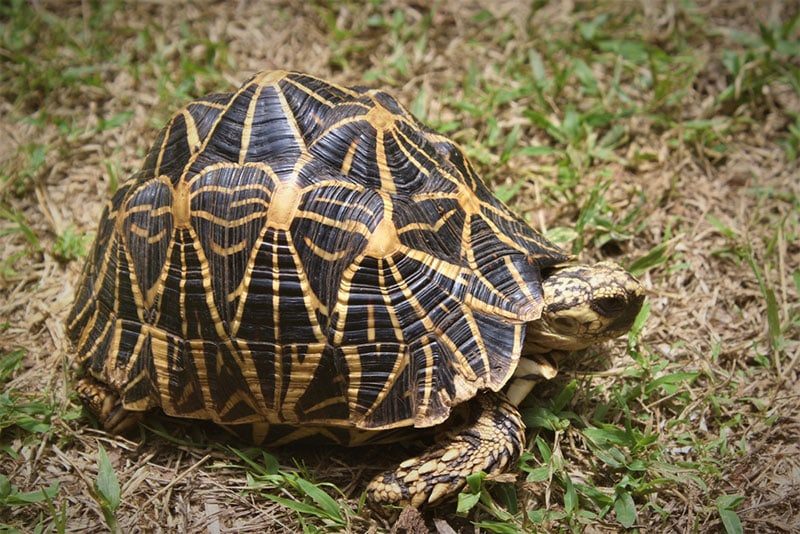
5. Leopard Tortoise
Do you know that a Leopard tortoise is the fourth largest tortoise in this world? Although the tortoise looks like a giant, they are shy and quiet.
The Leopard tortoise has many amazing characteristics. For instance, the animal can sprint when scared and anxious. What’s more, a Leopard tortoise can climb mountains, thanks to back legs that look like a truck. The pet loves eating grass, flowers, fruits, and fungi.
If you plan to house a Leopard tortoise, arrange a space of at least 80 square feet. In addition, keep the moisture levels as low as possible as they find it hard to survive in moisture.

6. Marginated Tortoise
This tortoise can live as long as 100 years. A Marginated tortoise is a European breed and originally belonged to Greece.
The tortoise doesn’t shy away from basking under the sun. Make sure that the right enclosure for the tortoise is almost 16 square feet with UVB lights and the right humidity. Since this tortoise species can climb and dig, ensure the enclosure’s walls are deep enough to prevent an escape.
The good thing about a Marginated tortoise is that this animal can easily survive all harsh environments. The tortoise is tough and can live with you easily.
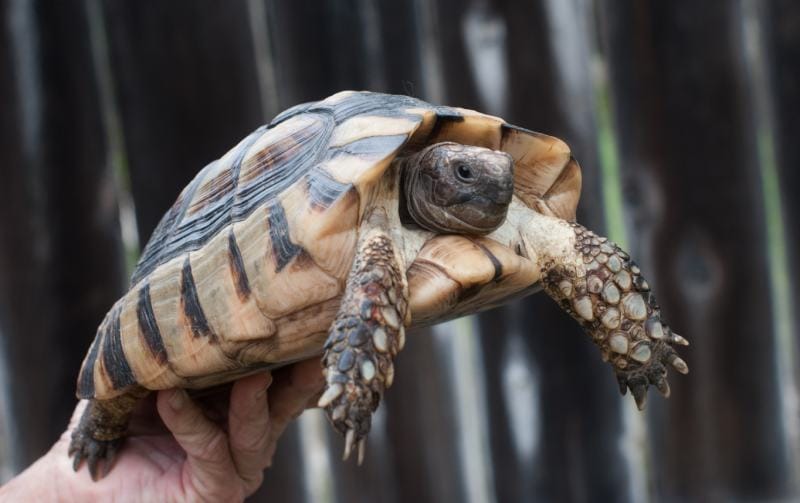
7. Hermann’s Tortoise
If you don’t want to keep a fussy tortoise, a Hermann may make a perfect choice. This docile and calm animal has an ideal temperament. You will love this reptile for their unique personality and cute pattern on the shell. In addition, you can keep the tortoise both outdoors and indoors in their suitable enclosures. Since this reptile is active, it is advised to have plants, decor items, and rocks in their aquarium to keep them busy.
A Hermann tortoise loves fruits but can also enjoy fruit at times. Ensure you provide a suitable temperature for your pet with a basking spot and a UVB light.
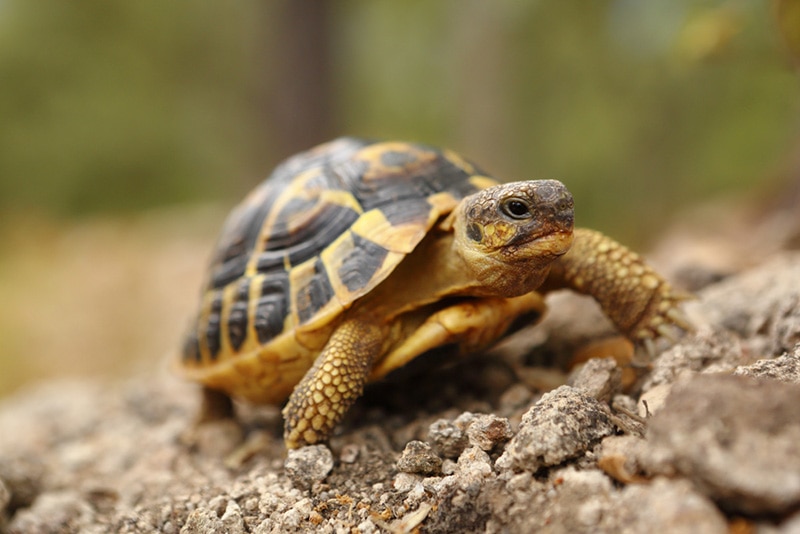
Conclusion
So, what do you think? Is it worth having a tortoise as a pet? It is, provided you are ready to love and care for your tortoise. Like all other pets, a tortoise also demands some attention, but they are not as fussy as cats and dogs.
Ensure you provide the animal with a perfect home with the right temperature and moisture. For your comfort, build walls according to the tortoise’s activity levels.
Believe us; this animal can be your best companion. So, don’t underestimate a tortoise’s capabilities as a pet.
See Also:
- Can a Tortoise Get COVID? Vet-Reviewed Facts & FAQ
- Do Tortoises & Turtles Fart? Vet-Approved Tips, Facts, & FAQ
Featured Image Credit: george photo cm, Shutterstock


